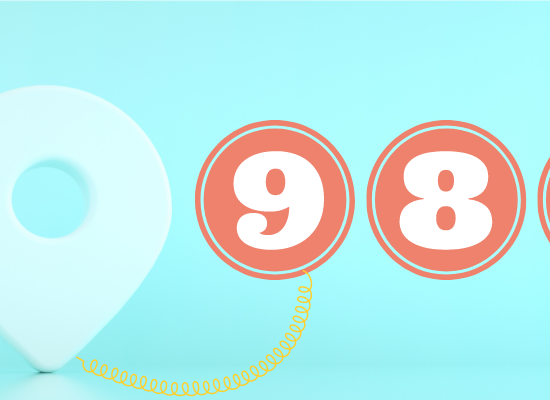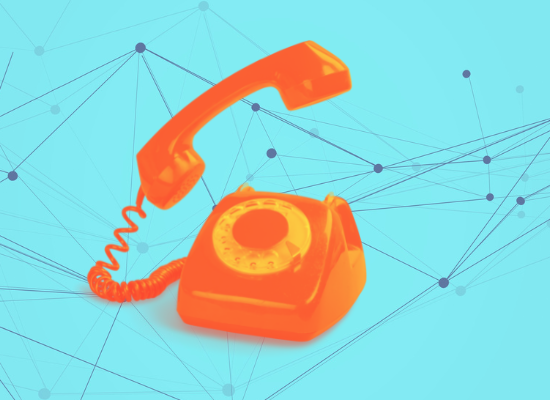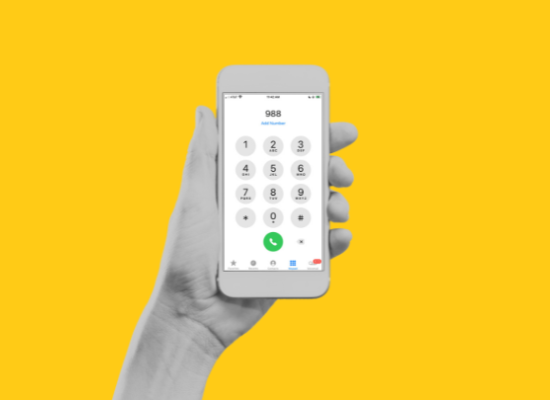
Stephanie Hepburn is a writer in New Orleans. She is the editor in chief of #CrisisTalk. You can reach her at .
Over the past two decades, Dr. Madelyn Gould has evaluated the SAMHSA-funded National Suicide Prevention Lifeline, studying whether the crisis intervention service significantly decreases suicide risk, despair, and hopelessness. (It does.) She’s a professor of epidemiology in Columbia University’s psychiatry department and a research scientist at the New York State Psychiatric Institute. The process between her evaluation studies and Lifeline’s practices has been iterative, with Dr. Gould and the Lifeline learning from one another and refining, improving, and building on what they know. As technology advances, Dr. Gould believes automation will help provide Lifeline’s crisis call centers with a vital feedback loop to determine whether they’re meeting the needs of those contacting them.
From the start, Dr. Gould says the aim was never to change the Lifeline’s existing programs but “to understand what they were doing.” (To ensure their studies are reliable and valid, Dr. Gould and her team do ask Lifeline accredited crisis centers to engage in assessment protocols.) However, the two have influenced one another. So far, over 60 of the network’s crisis centers have taken part in her studies, and their call counselors’ expertise on suicide, psychiatric distress, and crisis intervention have helped improve the quality of Dr. Gould’s evaluations. The experience has affected her both professionally and personally. “I became much more aware of crisis services and people in crisis,” she says. “It’s changed me as a person.”
In turn, the Lifeline has been affected by Dr. Gould’s evaluations, incorporating her assessment tools and scripts to use in a clinical context. That includes follow-up and the “Initial Request Script,” language she and her team developed for counselors during their first evaluation of the Lifeline. “Callers have to explicitly approve any information that’s shared with us,” she points out. “The script asks callers if it’s alright for us to follow up with them for the evaluation.” Counselors use the script at the end of the call.
Initially, many call counselors weren’t comfortable with the addition. “Asking a caller if they’re okay with a follow-up call was new,” says Dr. Gould, “especially, a call for evaluation and not clinical purposes.” However, all evaluation interviews were and are done by former crisis counselors. “People are still incredibly vulnerable 2-3 weeks after a crisis,” she points out. “I only hire interviewers who’ve worked as counselors on a crisis line or the equivalent.” If the person is experiencing suicidal behavior or psychiatric distress during a follow-up call, the interviewer connects them back to the crisis center.
Dr. Gould’s early evaluations of the Lifeline quickly illustrated that call outcomes improve when the call counselor is supportive, connects with the caller, and uses collaborative problem-solving. They also highlighted how critical follow-up is to crisis stabilization, causing many Lifeline call centers to pivot and integrate follow-up into their own clinical practices and use the previously mentioned “Initial Request Script.”
In 2020, the FCC established 988 as the nationwide number for mental health, substance use, and suicide crises, requiring all telecom carriers to direct 988 calls to the Lifeline by July 16, 2022. In preparation, Dr. Gould and her team are evaluating the Lifeline’s effectiveness once again. “Our estimates are several years old, and we need numbers that represent the growing network as it is now,” she says. Today, the Lifeline is a network of nearly 200 accredited call centers. The new study will also assess a random sample of calls, using coding procedures that reflect the Lifeline’s best practices.
With 988 going “live” in less than 6 months, Dr. Gould says the need for close oversight will be greater than ever. She highlights that communities must have a mechanism for real-time, ongoing assessment of their call center’s effectiveness. Automated assessment tools, which crisis centers could easily adopt, provide a data feedback loop, letting the Lifeline know whether the service meets callers’ needs and can potentially help identify trends and shifts. One such tool is an automatic post-call survey. “It’s a cost-effective and sustainable assessment tool that a system can readily use,” she says. While the Lifeline and accredited crisis call centers already monitor wait time and capacity, Dr. Gould says they should also track user surveys to determine assessment quality. “The perception of a user is an important indicator of how the call went,” she says. To ensure accuracy, she and her team are working to evaluate caller biases in post-intervention surveys. “Maybe only satisfied callers respond or the opposite,” she points out, “or that only those dissatisfied do.”
Those are not the only biases on Dr. Gould’s mind. Her original study of the Hopeline Network (the Lifeline’s predecessor), published in 2007, looked at callers experiencing any psychological crisis. Her most recent paper similarly examines all types of crisis chatters, suicide and non-suicide. However, much of her research has focused on people in suicidal crisis reaching out to the Lifeline. Dr. Gould’s aim is that post-intervention surveys apply to those experiencing all kinds of distress, not just suicidal crises. As more people learn of and depend on 988, she says there also needs to be an ongoing focus on cultural competency. People reaching out to the Lifeline call centers closely resemble the nation’s overall demographics. Even so, Dr. Gould believes 988 provides an opportunity to reach the most vulnerable, hardest to reach populations. “That means call center counselors must be culturally competent,” she says.
Additionally, to effectively evaluate the service’s overall efficacy and standardization of the crisis intervention, users must be able to rapidly access 988 through all communication formats, including calls, chatters, and text. In November, the FCC voted to expand 988 to include texting—texts to 988 will go directly to the Lifeline. FCC Chair Jessica Rosenworcel said that adding text will expand people’s access to the Lifeline, especially for young people and those who are or feel more comfortable or safe reaching out by text. “While a voice hotline has its benefits, traditional telephone calls are no longer native communications for many young people,” she said in a statement. “Texting is where they turn first. That’s especially true for many at-risk communities, including LGBTQ youth and people with disabilities.”
Dr. Gould highlights that texters and chatters are more likely to report suicidality than callers. In fact, in nearly 84% of Lifeline crisis chatters she and her team studied, the person in crisis shared—in a pre-chat survey—they were experiencing or recently experienced suicidal ideation compared to roughly 23% of Lifeline callers who said they were suicidal the day prior or the day of the call. (The evaluated chats were from 2017-2018 and the calls from 2008–2009.) The Lifeline provides crisis intervention services through all three formats—they began providing services by telephone in 2005, chat in 2013, and text in 2021. Until 988 goes live on July 16, people can call or text the Lifeline at 1-800-273-TALK (8255) or chat with a counselor through the Lifeline website. There are 36 Lifeline accredited call centers that answer chat and text, though, with 988, the Lifeline hopes to expand this number.
While it’s still unclear what volume 988 will experience, behavioral health experts have suggested people reaching out to the Lifeline could be upward of 26 million. In 2020, the Lifeline received 1.8 million calls, 1.2 million chats, and 34,000 texts. However, what will be a game-changer is how many calls 988 can deflect and divert from 911. Americans make 240 million 911 calls per year, and behavioral health experts believe 988 could deflect at least 10%. There are some challenges. Unlike with 911, geolocation doesn’t yet exist for 988. Calls to 988 will continue to triage by area code unless callers press 1 to reach the Veterans Crisis Line. Vibrant Emotional Health, which administers the Lifeline, and NAMI have advocated for 988 geolocation, stating it would improve accuracy in connecting people to care in their area. In December, Michelle Sclater, an Alternate Designated Federal Officer at the FCC, shared with #CrisisTalk by email that the agency is “actively discussing geolocation internally and getting input from our leadership on options and next steps.”
To meet the spike in volume, Dr. Gould says the Lifeline must expand capacity and find ways, like automation, to continually evaluate the service. With the likely rapid growth in callers, chatters, and texters, the network will need to integrate automation. “I’m not trying to put myself totally out of business,” she laughs. “But for the greater good, there should be assessment tools the system can own—like an automatic post-call survey.” The automated survey would allow the Lifeline to get feedback information in real-time. “Not everyone is going to answer a survey, but the prompt allows callers, chatters, and texters to share their thoughts in a really quick way.”
Dr. Gould and her team have developed post-intervention surveys for calls, chats, and texts, which are prompted after the counselor has helped resolve the crisis. For example, after a chat session, the Lifeline prompts chatters to do a survey through an external link. According to an article Dr. Gould and co-authors published in July, the pre- and post-chat survey data are uploaded to a data warehouse, which can be looked at in real-time and examined for in-depth studies. The data, notes Dr. Gould, helps the Lifeline see what’s working and where there’s a need for improvement.
Recently, Dr. Gould and her team evaluated data from pre- and post-chat surveys between October 2017-June 2018 and found that, by the end of the chat, two-thirds of chatters found the chat helpful. More than 33.33% said they felt less overwhelmed, and roughly 25% reported feeling less depressed. Among those experiencing suicidal thoughts, 45% reported feeling less suicidal. However, notes Dr. Gould, the chat study also revealed critical areas for improvement. For instance, post-intervention surveys illustrated that chat counselors often helped de-escalate crises when the primary reason for the chat was depression, but outcomes were less favorable when the person outreached the chat to discuss abuse, addiction, eating disorders, or physical health challenges. With 988 around the corner, Dr. Gould and her co-authors said that counselors will need to meet the needs of people with a wide range of behavioral health concerns, not just depression or suicidal thoughts.
Dr. Gould envisions the rapid feedback loop will allow the automated surveys to become increasingly sophisticated so that they’re tailored to the person in crisis. “The automated surveys are going to help us learn more and more what interventions are missing,” she says, “or how they might affect different populations.” For example, if the person’s primary concern is a substance use disorder and they’re experiencing co-occurring mental health challenges, is the service as effective as for someone primarily experiencing depression?
The evaluation-to-practice and practice-to-evaluation process between the Lifeline and Dr. Gould has always been iterative, but Dr. Gould believes automation will help the service expand and improve their interventions quickly and effectively as the network experiences exponential growth.









